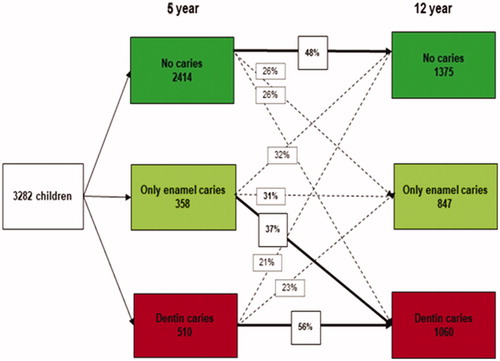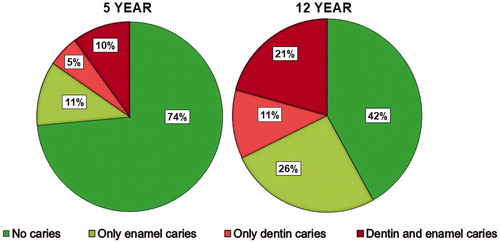Figures & data
Table 1. Children according to gender, parental background, parental education and family status (n = 3282).
Table 2. Dentine caries experience at tooth and surface level in children at 5 years of age. All children (n = 3282) and children with dentine caries experience (n = 510).
Table 3. Dentine caries experience at tooth and surface level in children at 12 years of age. All children (n = 3282) and children with dentine caries experience (n = 1060).
Figure 2. Longitudinal changes in enamel and dentine caries prevalence in children from 5 to 12 years of age.

Table 4. Number of surfaces with enamel caries and dentine caries experience at 12 years of age related to dentine caries prevalence at 5 years of age, mean (SD) (n = 3282).
Table 5. Children with dentine caries experience at 12 years of age according to caries variables controlled for child characteristics at 5 years of age. Bivariate and multivariate logistic regression analyses.


